The spring of 2009 has been a difficult one for publishers – newspapers especially – in the U.S., with many sizable metropolitan papers moving to online only, closing, or facing the possibility of closing. It’s lead many to wonder (again) what the future holds for publishers – whose value has arguably been derived from information scarcity – in the age of information ubiquity.
What should newspaper publishers, and other content-centered businesses, do? How should publishing evolve to accommodate the tremendous shift in publishing power represented by the fact that every internet user has a technical capability to create and distribute content never before seen? How should they adapt to the assembled web, in which users expect to interact with content in contexts they choose, rather than in contexts publishers control?
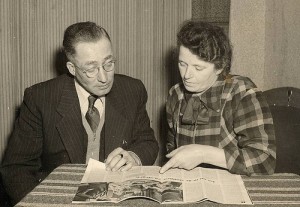
One of the most widely read recent salvos in this discussion has been Clay Shirky’s “Newspapers and Thinking the Unthinkable.” In that post (not surprising a blog post, rather than a traditional article) Shirky argues forcefully that the desire to “save newspapers” in the U.S. is fundamentally misguided:
Round and round this goes, with the people committed to saving newspapers demanding to know “If the old model is broken, what will work in its place?” To which the answer is: Nothing. Nothing will work. There is no general model for newspapers to replace the one the internet just broke.
Shirky places the current economic issues of major metropolitan dailies in historical context, as a revolution perhaps equal in upheaval to the original print revolution following Gutenberg.
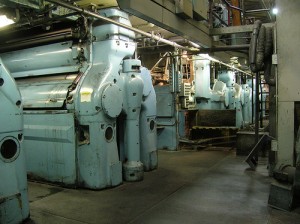
(Photo by Jon B. Swerens, cc-by-nc-sa license, click through for details)
In that context, hoping to save the newspaper seems the ultimate act of futility:
When someone demands to know how we are going to replace newspapers, they are really demanding to be told that we are not living through a revolution. They are demanding to be told that old systems won’t break before new systems are in place. They are demanding to be told that ancient social bargains aren’t in peril, that core institutions will be spared, that new methods of spreading information will improve previous practice rather than upending it. They are demanding to be lied to.
Shirky doesn’t mean, of course, that nothing from the era of the newspaper is worth preserving, just that it will take profoundly different forms, many of which we can only begin at this point to imagine:
Society doesn’t need newspapers. What we need is journalism. . . . For the next few decades, journalism will be made up of overlapping special cases. . . . No one experiment is going to replace what we are now losing with the demise of news on paper, but over time, the collection of new experiments that do work might give us the journalism we need.
Shirky’s piece resonated throughout the web, being favorited, shared, retweeted, re-blogged, bookmarked, stumbled upon, and dugg.
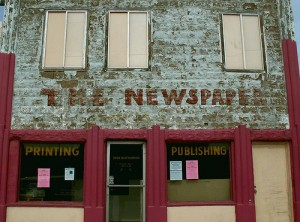
A very thoughtful response, from someone with a serious background in mainstream journalism, came this week (also in the form of a blog entry) from Jason Pontin, the Editor in Chief and Publisher of Technology Review: How to Save Media.
Pontin refuses to accept Shirky’s diagnosis, and declares the patient very much alive. He concedes that a number of practices of traditional print media have not helped in the current crisis – artificially inflating circulation, ignoring and cultivating a certain editorial disdain for ‘reader feedback’ – but also argues that there is strong and continued demand for well written, editorially curated content, and that this will continue to be the case in the future.
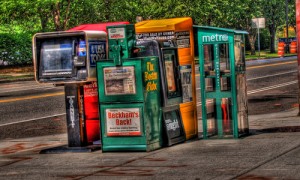
At some level, Shirky and Pontin are firing past each other, without realizing that in many ways they agree. Pontin takes issue with Shirky’s assertion that the root cause of the current crisis is that “printing presses are terrifically expensive to set up and to run,” noting that most publishers have leased presses for the last several decades, and that the real cost of production is in all the other, knowledge-worker-driven work involved in producing a print publication:
The printing press stands here as an objective correlative for the material production and distribution of media. Shirky and Winer’s real error is that the physical is the least of it. The comparative advantage of mainstream media is not the ownership of presses, but the collaboration of professionals. The creation of good journalism is a tremendously laborious process, requiring an infrastructure more expensive than any press. The illustration and design of stories has an infrastructure, too. Developing an audience that will attract particular advertisers requires another infrastructure. Selling advertising requires yet another. These structures, which allow publications to reach large, coherent audiences, can exist only within complex organizations, mostly businesses.
While the point Pontin makes is certainly valid – the printing press here stands in for a whole set of organizational and bureaucratic structures which make large scale coordinated efforts possible: namely, the corporation. But that’s exactly Shirky’s point, and reading Shirky’s blog post in the context of Here Comes Everybody, it seems clear that he’s not ignorant of the large scale organizations (in corporate form) which made possible traditional production. What Shirky is arguing is that the large scale traditional newspaper is no longer the only – or even the most effectively adapted – method of organization capable of serving the needs newspapers historically served.
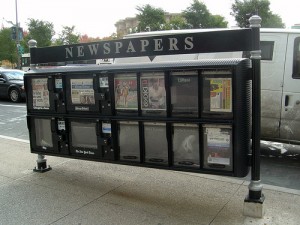
(Photo by Chris Metcalf, cc-by license, click through for details)
Where Shirky paints the newspapers (and by implication those who hope to “save” them) with a broad brush as ostriches with their collective heads in the sand, or unthinking luddites hoping to be spared the reality that times have changed, Pontin has a tendency to dismiss Shirky (and Winer, the other target of most of Pontin’s barbs) as outsiders from (gasp) the new media world:
Among those who write about new media, a fashionable consensus has emerged . . .
And:
This is all folly and ignorance. Shirky, Winer, and other evangelists know nothing about the business of media. . . . Shirky and Winer are disgruntled consumers and, as bloggers, advocates for an insurrection. Thus, they are to be read skeptically. Their prescriptions would be more convincing if they were less polemical and better informed by some knowledge of what publishers sell.
I don’t know (or care) what “business of media” bona fides Shirky or Winer bring to the debate, but it seems an unnecessary and unnecessarily self-conscious rhetorical circling of the wagons to keep the fanatical, evangelical, and insurrectionist outsiders from upsetting the publishing world’s self-image.

(Photo by Mark O'Brien, cc-by-nc license, click through for details)
That said, Pontin’s set of recommendations seem utterly reasonable, well-fashioned, and on target (they also seem not too far from what Shirky might suggest, if he were focused on what publishers should do rather than on what will replace them). He breaks his recommendations into three major sections: circulation (subscriptions), advertising, and editorial.
For circulation, he accepts that print circulation must be allowed to shrink to “organic” levels, which will be much lower than today. Publishers need to determine how to deliver subscriptions to new devices in addition to print, as well as learn how to provide multiple subscription offering in ways which are sensible from the users point of view, including potentially a la carte or story bundle based pricing. Finally, he argues that printing and physical distribution should be done less frequently.
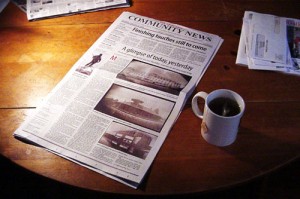
(Photo by Matt Callow, cc-by-sa license, click through for details)
In relation to advertising, Pontin concedes that advertising has traditionally been “oversold,” and that classified ad revenue will never again be significant, sounding rather like Shirky (or even Winer):
Classifieds, except in the very narrow sense of job listings in professional publications, are no longer part of the business of publishing. Get over it.
Instead Pontin suggests publishers look to Google’s keyword based advertising model and increasingly accurate audience measurement online, as well as exploring custom advertising and microsites:
Among the most promising advertising forms for media companies is custom advertising. In these arrangements, a publisher works directly with an advertiser and its agency to create a unique campaign, attached to a particular editorial event, that targets a publisher’s audience and integrates all the publisher’s platforms, often with a microsite that harvests sales, leads, or whatever else the advertiser values.
Finally, in relation to editorial issues, Pontin concedes that editorial hubris is a barrier publishers must overcome to make significant progress:
As I rose through the editorial ranks of various magazines, I was encouraged to cultivate a mild contempt for readers. We disdained the market research our publishers commissioned, telling ourselves that readers didn’t know what they wanted. But electronic media and social technologies have had a paradoxical effect: on the one hand, disappointed readers can abandon a publication with a click of a mouse or stab of a thumb, and at the same time they have strengthened readers’ proprietorial sensibilities.
Readers expect, in the two-way medium that is the Internet, to be able to respond and influence the publications with which they interact, not just consume the publications they read:
One of the things that some readers say they want is to be able to post comments about stories as well as their own stories to the Web sites of media companies. Often, such readers want to be able to communicate directly with one another, using social technologies. The readers who want to do this are not very many, but they feel strongly about the subject, and become angry if they suspect editors wish to be “gatekeepers”. Editors must welcome such readerly participation, and should open their editorial departments to the wider world.
Kudos to Pontin for making the shift to Web 2.0, and understanding that “readerly participation” is not only a necessary concession but can also be a welcome one. (I can’t help but note though that the tone has not entirely changed: some readers say they want to be able to post comments? “Readerly participation” as a phrase is itself a bit dismissive, like “amateur photography” or “hobbyist programmer.”).
In essence, Pontin’s recommendations are entirely reasonable: focus on delivering valuable content to interested audiences through media they choose, adding the interactive capabilities (both in terms of community interaction and richer multimedia) and targeted advertising that those new media make possible. This will result in smaller editorial teams, smaller and less frequent print publications (likely also fewer of them, though Pontin doesn’t make this point explicit), and an increased reliance on advertising-supported, free, digital content.
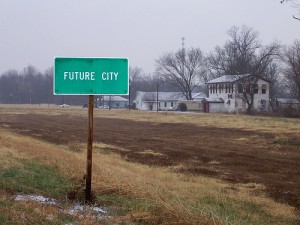
(Photo by ILMO JOE, cc-by-nc-sa license, click through for details)
If anything, the challenge to Pontin’s proposals may be that this is too little, too late. Newspapers as an industry have had over a decade to effectively respond to the opportunity that new media represents, and have broadly failed. While undoubtedly there is a future for content centric businesses online (and even for newspapers, in whatever form they might take), it does seem at this point that many existing business will disappear in the process. Thus Shirky may have the last word:
With the old economics destroyed, organizational forms perfected for industrial production have to be replaced with structures optimized for digital data. It makes increasingly less sense even to talk about a publishing industry, because the core problem publishing solves — the incredible difficulty, complexity, and expense of making something available to the public — has stopped being a problem.
In the end, whether the “structures optimized for digital data” are the same “publishing companies” reorganized, made more efficient, with an infusion of digital thinking, remains to be seen.
I really love this debate – there is actually a great deal at stake.
Newspapers have historically served another purpose not mentioned in your post – complex, thorough, investigative journalism. This type of work requires significant commitment and cost, the scale of which most new media organizations cannot afford. This story is described in great detail here, which cites over $1M in cost the Boston Globe invested as part of its investigation of the Catholic Church in Boston.
The absence of this will leave gaping holes in the communication of “news” in local communities.
While there is undoubtedly a mandate to change the business model of the traditional printed local paper – let’s not confuse that for having no unique value in the marketplace.
Agreed – we need to find additional models which are capable of funding sustained investigative journalism – locally AND internationally.
But I think Shirky’s right on to point out that we shouldn’t assume that the metropolitan newspaper is the only or even best option.